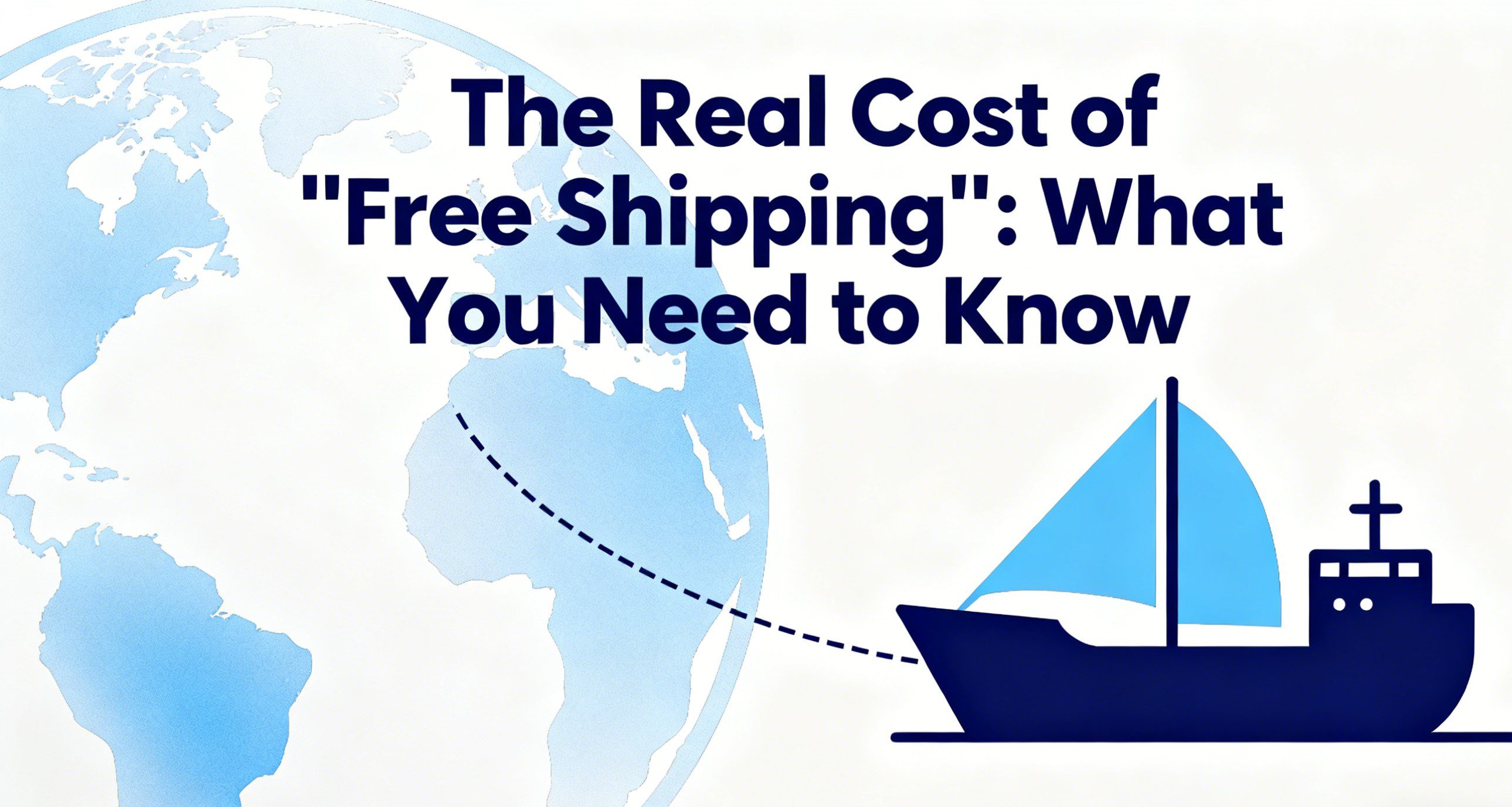BLOG
The Ultimate Guide to Shipping Luggage Internationally
- wanmeili
- 2025-04-21
Introduction
As travel evolves in our fast-paced world, a growing trend has emerged among globetrotters and expatriates: the choice to ship luggage overseas instead of lugging it around. This innovative approach is rapidly gaining traction, as more and more individuals recognize the benefits it brings to their travel experiences. From vacationers hopping between cities to long-term expats navigating new lives abroad, opting for a luggage shipping service can significantly ease the journey.
The primary advantages of shipping luggage internationally hinge on convenience and cost-effectiveness. By choosing to ship ahead, travelers can bypass the stress of managing multiple bags in crowded airports, transforming what was once a cumbersome task into a seamless experience. Moreover, this method helps avoid those pesky airline baggage fees that can quickly add up, offering a more budget-friendly alternative. Join us as we delve deeper into why shipping luggage is becoming the preferred choice for travelers around the globe, making adventure more accessible than ever.
Why People Choose to Ship Luggage Internationally
Shipping luggage internationally allows travelers to avoid the hassle of managing heavy bags at airports, making travel smoother and more enjoyable.
Cost-Effective: By eliminating or reducing airline baggage fees, shipping luggage can save money, especially for those traveling with multiple bags or equipment.
Time-Saving: Bypassing long lines at check-in and baggage claim means travelers can spend more time enjoying their destination and less time dealing with logistics.
Flexibility: Luggage shipping offers flexibility in travel plans, allowing individuals to send belongings directly to their accommodations and travel light, even on connecting flights.
Safety of Belongings: Shipping luggage securely reduces the risk of lost or damaged bags, a common headache for many travelers.
Easier Compliance with Regulations: With varying weight restrictions and regulations on airlines, shipping luggage can simplify the packing process by allowing you to send items that might not meet airline standards.
Streamlined Travel Experience: By sending luggage directly to a destination, travelers can navigate airports more freely, making the overall travel experience less stressful and more efficient.
How Can I Ship Luggage Overseas?
Research and select a reputable luggage shipping company that specializes in international shipping can effectively expedite the shipping cycle.
Compare Costs and Services: Get quotes from multiple shipping providers and compare their services, delivery times, and insurance options to find the best fit for your budget and needs.
Prepare Your Luggage: Pack your items securely in your suitcase or shipping box. Use proper packing materials, and if necessary, label the contents clearly to ensure safe handling.
Fill Out Necessary Paperwork: Complete any required customs declarations and shipping forms. Be aware of regulations regarding prohibited items and ensure that your shipment complies with destination country rules.
Schedule Pickup or Drop Off: Arrange for a pickup from your home or drop off your luggage at a designated shipping location. Many services offer convenient options to simplify this process.
Track Your Shipment: Utilize tracking services provided by the shipping company to monitor your luggage’s journey. This will give you peace of mind and allow you to anticipate its arrival.
Confirm Delivery: Upon arrival at your destination, confirm that your luggage has been delivered to the correct address. Inspect it for any damages and report any issues to the shipping service immediately.
Best Way to Ship Luggage Internationally
When shipping luggage internationally, understanding the options available can help you choose the best service for your needs. Below, we compare major carriers and specialized luggage shipping services based on several factors.
Compare Carriers: FedEx, DHL, and Luggage-Specific Services
FedEx:
Pros: Fast delivery, extensive global network, reliable tracking systems.
Cons: Higher costs compared to other services, limited weight allowances for certain rates.
DHL:
Pros: Excellent international reach, known for punctuality, strong customer service.
Cons: Pricing can be high for express services, longer transit times for certain routes.
Luggage-Specific Services:
Pros: Tailored services for travelers, often more affordable for multiple bags, pickup and delivery to/from your location.
Cons: May have longer delivery times, potentially less reliable than major carriers for urgent shipments.
Pros and Cons of Courier vs Freight Services
Courier Services
Pros:
Fast delivery (usually 1-5 business days)
Door-to-door service
Provides detailed tracking
Cons:
More expensive compared to freight services
Weight and size limitations
Freight Services
Pros:
Cost-effective for shipping large volumes
More flexible in terms of size and weight
Cons:
Takes longer for delivery (often days to weeks)
More complex logistics and paperwork
Recommended For:
Business Travelers:
Recommended Approach: Courier services like FedEx or DHL are ideal for business travelers needing to ship essential items quickly. These services ensure timely deliveries, allowing professionals to focus on their work without worrying about luggage.
Families Relocating:
Recommended Approach: Luggage-specific services or freight services are generally more suitable for families relocating. These options can handle larger quantities of luggage at a lower cost, making it easier and more affordable to move multiple bags.
Can You Send Luggage on an Airline Without Flying?
You can send luggage on an airline without actually flying. Many airlines offer baggage forwarding services that allow you to ship your luggage separately from your travel itinerary. This service can be particularly useful for those who want to avoid carrying heavy bags to the airport or for individuals who wish to send luggage ahead of time to their destination.
Explanation of Airline Baggage Forwarding Services
Airline baggage forwarding services allow customers to ship their luggage via the airline’s network, even if they are not traveling on the same flight. Here’s how it generally works:
Booking: You can book the baggage forwarding service through the airline’s website or air freight forwarding service. You will need to specify the pickup location (your home or hotel) and the destination.
Pickup Service: Many airlines offer pickup services, wherein the luggage is collected from your location and transported to the airport.
Transportation: The airline takes care of the transportation of your luggage, ensuring it arrives at your desired destination.
Delivery: Once the luggage has arrived at the destination airport, it can either be delivered to a specified address or held for pickup.
Limitations and Availability
While baggage forwarding services can be convenient, they also come with certain limitations and considerations:
Availability: Not all airlines offer baggage forwarding services, and availability may depend on specific routes and locations. It’s essential to check with the airline you plan to use.
Cost: These services may come with transactional costs that could vary significantly depending on factors like distance, weight, and size of the luggage.
Size and Weight Restrictions: Most airlines have size and weight limits for luggage, and exceeding these may incur additional fees. It’s crucial to verify these limits before shipping.
Delivery Times: While airlines strive to have baggage delivered promptly, shipping times can vary based on location and other logistical factors. It may take several days for the luggage to arrive at the destination.
Insurance: Depending on the airline, there may be limited liability for lost or damaged luggage. Purchasing additional insurance may be recommended for valuable items.
Customs and Regulations: If you’re sending luggage internationally, customs regulations may apply, and you may need to provide additional documentation.
How Much Does It Cost to Ship Luggage Internationally?
Shipping luggage internationally involves various cost factors, and understanding these can help you make more informed decisions. Here’s a breakdown of the primary factors influencing costs:
1. Cost Factors
Distance:
The farther the destination, the higher the shipping cost. International shipments usually incur higher rates than domestic shipping due to logistics, customs, and transportation charges.
Size & Weight:
Heavier and larger items typically cost more to ship. Most shipping companies charge based on dimensional weight (calculated by the size of the package) or actual weight, whichever is greater. It’s essential to accurately weigh and measure your luggage before shipping.
Speed:
Shipping options vary in terms of speed, affecting the cost. Standard shipping is usually more economical but takes longer, while expedited services, such as priority shipping, come at a premium. Selecting express services can considerably increase the overall cost.
2. Cost Comparison with Airline Excess Baggage Fees
Airline Fees:
Excess baggage fees can range from $50 to over $200 per extra bag, depending on the airline, route, and whether you’re flying internationally or domestically. Charges typically increase for oversized or overweight bags.
Shipping Costs:
International luggage shipping costs can vary widely but generally range from $100 to $500 or more, depending on the factors mentioned above. While this may seem high, it can be more economical than excess baggage fees, especially for larger shipments or longer journeys.
Convenience and Value:
Beyond just the cost comparison, shipping offers convenience by allowing you to travel bag-free, potentially avoiding airport hassles, and sometimes costing less than airline excess fees, particularly if you are shipping multiple bags or planning longer stays.
Air Freight vs Ocean Freight: Which is Right for You?
When shipping luggage internationally, choosing between air freight and ocean freight depends on your priorities. Air freight offers speed, typically delivering within days but at a higher cost. It’s ideal for urgent shipments. Conversely, ocean freight is more economical for larger loads but can take weeks for delivery. If you’re moving many items or traveling longer distances, ocean freight might be the better choice. Assess your budget, time constraints, and volume to make the most informed decision for your luggage shipping needs.
Conclusion
Sending your luggage overseas using international forwarding services is essential for sidestepping delays, minimizing stress, and reducing travel costs. By relieving yourself of the hassle of heavy bags, you open up opportunities to explore more, engage in new experiences, and enhance your overall travel enjoyment!
Frequently Asked Questions
What is the cheapest way to ship luggage internationally?
The cheapest way to ship luggage internationally is often through postal services or freight forwarders, such as UPS, FedEx, or DHL.
How long does international luggage shipping take?
Normally 7-9 working days if opting for the international courier service.
Can I ship suitcases with wheels and handles?
Yes, you can ship suitcases with wheels and handles using most shipping services. However, check specific carrier guidelines, as some may have size and weight restrictions. Ensure your suitcase is securely packed, and consider using a protective cover to prevent damage during transit for added security.
Is shipping luggage internationally safe?
Shipping luggage internationally can be safe, especially with reputable carriers that offer tracking and insurance options. However, risks like damage or loss exist. To enhance safety, securely pack your items, use sturdy luggage, and choose a reliable shipping service with a good reputation and customer reviews for peace of mind.
What items are restricted when shipping luggage?
Restricted items when shipping luggage typically include explosives, flammable materials, weapons, illegal drugs, perishable goods, and valuables like cash or jewelry. Additionally, certain electronics may have restrictions. Always check the specific guidelines of the shipping carrier and destination country to ensure compliance with regulations and avoid shipping issues.
Do I need to be present to receive my luggage?
Yes, typically you need to be present to receive your luggage, especially when it is delivered to your home or a designated location. Some services may allow a trusted individual to receive it on your behalf, but identification and authorization are usually required.



